The story of St. George the Victorious is very interesting. The holy martyr George was born in Cappadocia, the middle part of modern Turkey, in a family of true Christians who were distinguished by a deep faith in the Lord. Having entered the service of the Roman army, St. George, having distinguished himself more than once in battle, was noticed by the emperor Diocletian and taken into his guard.
Martyrdom of St. George
Emperor Diocletian was the last and most severe persecutor of Christians. Having heeded the persuasion of pagan priests, he brought down four consecutive, increasingly increasing in terms of cruelty, persecutions against Christians. At first, the Christian basilica was destroyed, then the wrath of the emperor turned to Christian warriors.
At this time, St. Great Martyr George the Victorious began to prepare for martyrdom. During interrogation, George advised the emperor not to believe false speculations against Christians. When asked about who prompted him to such an impudent speech, George answered - Truth. Diocletian ordered George to be wheeled. He was tied to a wheel, under which wooden boards with iron tips were installed. They pierced the body of the saint and tormented him. After some time George lost consciousness, Diocletian decided that he was dead and ordered to remove the body from the wheel. At this moment, according to legend, it became dark and a voice came from above: "Do not be afraid, George, I am with you." The emperor called on the most skilled magician Athanasius to conquer George with his magic or poison him with magical herbs. However, George, having prayed, drank the cups of potion offered to him without any harm to himself. The poor farmer Glycerius turned to the martyr imprisoned in prison with a request to restore to life his only ox who fell on the arable land. When the miracle was completed, Glycerius began to walk around the city, glorifying the god of Christians, for which he was truncated with a sword. So the unreasonable creature received earthly life, so that its owner would gain eternal life. St. George was tortured and executed on April 23, 303, before he reached the age of 30.
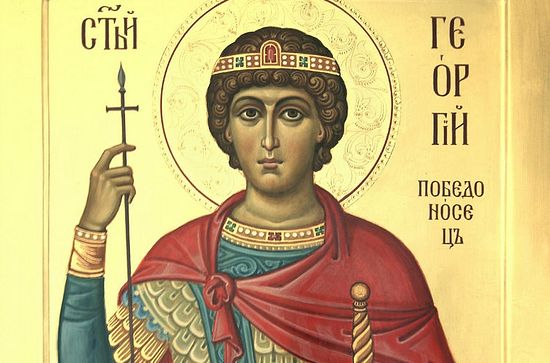
"... The hero pierces the bastard ..."
But the most important thing begins after he was wheeled. After death, he appeared and freed the country from the enemy. Dressed in shining armor, George held a spoke in his hands. It was with this spoke that he pierced the invincible dragon, who had tormented the city for so long. The act of George is a demonstration of high spiritual strength, and not a physical feat. All over the world, people worship the image of George the Victorious on a horse. This icon, according to believers, has a special power. Where did the famous clash of George and the Dragon take place?
Lebanon
In Lebanon, there is a rock on which, according to legend, St. George passed. Traces from the hooves of his horse are still visible, therefore it is called the Rock of St. George. People from all over the world come here and receive healing. A monastery near this place was built in the 15th century. There were constant wars, it was repeatedly set on fire, but as soon as the flame reached the icon of St. George, it immediately went out. They say that it was in those places in the grotto of Junia that George killed the Dragon.
Syria
According to one version, the life of St. George took place precisely in Syria. The evidence in favor of the veracity of this theory is the Church of St. George, built in the VI century in a small town of Ezra. The Syrians claim that a lot of unusual and miraculous happens in these places from ancient times to today. In Syria there is not a single village where the temple did not rise or, at least, the icon of St. George was not located.
England
George is the most important saint in England. There are a number of reasons for this. There are many stories about him. For example, a red cross on a white background is what Richard the Lionheart saw in a dream on the eve of the decisive battle during the Crusade. Richard decided to make this cross one of the main symbols of the British army.
Georgia
St. George is the guardian of Georgia, the people and the church of this country. Surprisingly, it is a fact - in the world there is not a single country where for a year every day would be celebrated as St. George's Day. But in Georgia it was once so. Why is this saint revered here? The great martyr George is a warrior, and the Georgian people throughout history had to defend themselves, their faith, their culture, their language. It is said here that the path of the Georgian people is similar to the path of St. George.
Russia
The Russian people perceive it as their saint, as their heavenly patron. Each church has an icon of St. George the Victorious. Memorial Day of the Great Martyr George is celebrated on May 6. Sometimes this day coincides with Easter, the bright Resurrection of Christ. In this case, St. George's Memorial Day is postponed to Wednesday of the Bright Week, i.e., on May 9th. That is what happened in 1945. May 9 of that year was the first day of the world and the icon of St. George the Victorious was worshiped in all Russian Orthodox churches. Then there was the victory parade, which was hosted by Marshal Georgy Zhukov. Riding on a white horse, he traveled around the troops lining up on Red Square and greeted the victorious soldiers. Probably, it was not by chance that the celebrated commander bore the name of St. George. He was a believer and throughout the war he always had an icon with him - the blessing of his mother. Over a thousand years, our ancestors had to defend their native land many times and defeat countless enemies. That is why the great martyr George the Victorious was always revered by Russian soldiers for his highest fighting qualities - strength of mind, firmness, fearlessness and will. His very nickname - Victorious - sounds like weapon steel and calls for high service. St. George showed the world a great example of Christian feat and love for the Lord. Many consider this Saint “their own.” But if you ask which coat of arms depicts George the Victorious, the answer is obvious - to Russia.
Veneration of the saint
The veneration of St. George began shortly after his death. Already the first Christian emperor Constantine the Great placed the icon of St. George over the entrance to the palace in Constantinople. And after him, other Byzantine rulers began to consider St. George as their heavenly patron. A reverent veneration of this holy warrior came to Russia.
Churches and cities in honor of St. George
Prince Vladimir, who baptized Russia, put in Kiev the first church of St. George the Victorious. That was just the beginning. Temples and monasteries were erected in honor of the saint. Even entire cities were built. So, Prince Yaroslav the Wise, who received the name George at baptism, founded the city of Yuryev to glorify his Holy Patron. I must say that from ancient times the name George in Russia could be pronounced differently - Egoriy, Yegor and Yuri. One of the most famous Georgievs is Prince Yuri Dolgoruky, the founder of Moscow. He, wanting to glorify the heavenly warrior, whose name he received, built another city of Yuryev. Soon, Moscow itself received St. George the Victorious as a patron of heaven. This happened under the rightful Prince Dmitry Donskoy, who defeated the enemies on the field of Kulikov. Before this battle, Russian soldiers in fervent prayers turned to St. George for help, and then went into battle and defeated the enemy.
Military awards
Whatever troubles and unrest fell upon Russia, our land does not become impoverished Valiant warriors who are ready to lay down their lives for faith and the Fatherland. It is not in vain that the people say: "By deeds and reward." The highest award for officers of the Russian army was the Order of the Holy Great Martyr and Victorious George, established by Catherine II. And her grandson, Emperor Alexander I, established the St. George Cross to reward the lower ranks of the army and navy. It was possible to deserve it only with real courage and fearlessness in battle. They wore it on the chest in front of all the medals on a ribbon with orange-black stripes. During the Great Patriotic War, a soldier's Order of Glory of three degrees was established. The name of the order was different, but the ceremony itself and the coloring of the ribbon is a direct reminder of the Cross of St. George. For this he was especially loved and appreciated by both fighters and the whole people. And in 1992, the military Order of St. George and the insignia of the Cross of St. George were restored.
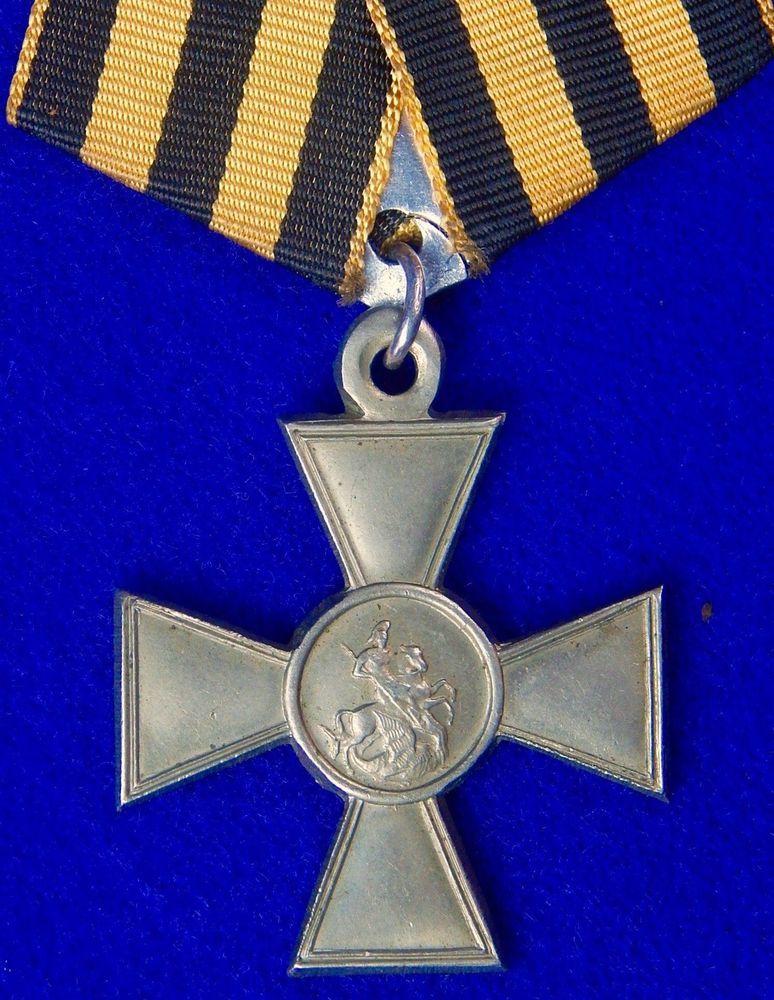
Icon of St. George the Victorious, the significance of what helps
How is St. George portrayed and what secrets are associated with his images? There are many secrets. It is not in vain that St. George has long been considered the patron saint of Byzantium. His image was found everywhere: on the walls of palaces in the capital of Byzantium, above the city gates. His face was minted on coins and worn on his chest next to the Orthodox cross. How did they depict George on the icons? At the earliest - he is young and strong, with thick curly hair. Like all martyrs, he is painted in red clothing with a cross in his hands.
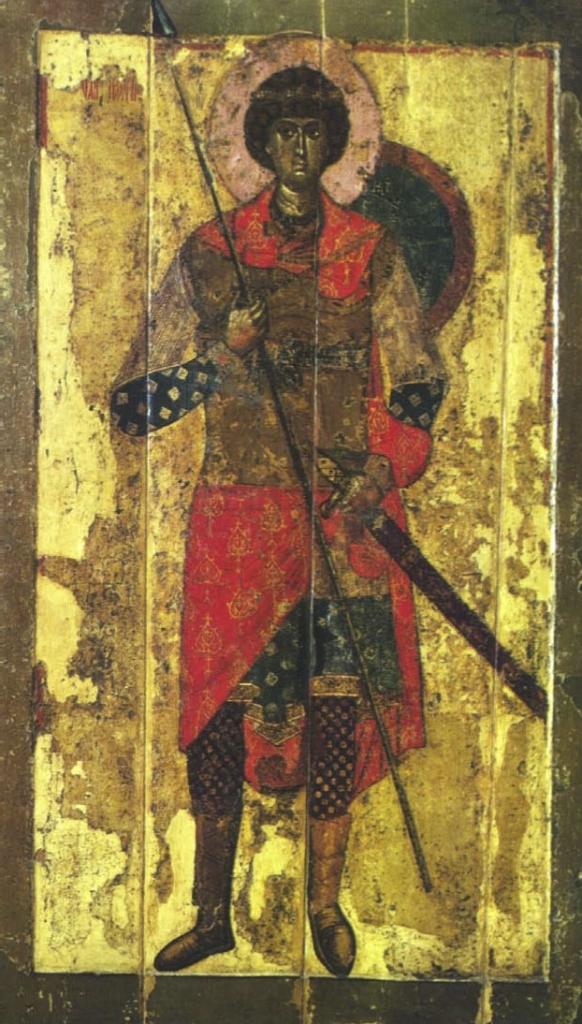
Later icons are growth ones. On them George in the image of a warrior. His courage and military spirit are immediately evident. With all his appearance, he justifies the proud title of "Victorious." The weapon in the hands of the saint seems to indicate that the whole Christian people are under his protection, that he is ready to protect us day and night from any enemies. These icons are known since ancient times, the oldest of about 800 years. Those times were turbulent for Russia and its people. Very often, people had to defend their homes and families from enemy raids. Icons such as this one helped to not lose heart, to believe that God would certainly come to the rescue at the most difficult hour.
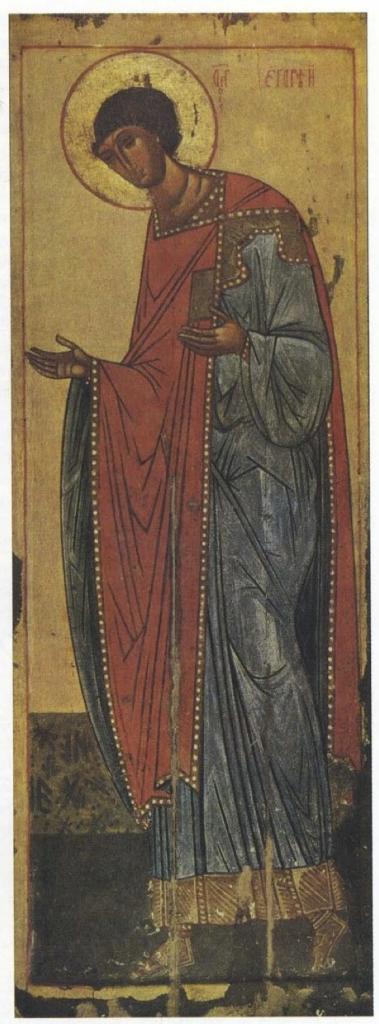
The next icon is George the Victorious from the Deesis rank. Here we see neither military armor nor weapons in the hands of the saint. It is understood that the saint ended his life path and abides in heaven. Where there are no wars, sufferings, sorrows, troubles. Therefore, such icons do not focus either on military distinctions or on princely ones. All saints have one goal - to hear the voice of the afflicted and come to their aid. An example of this is the miracle that happened many years after the martyrdom of George.
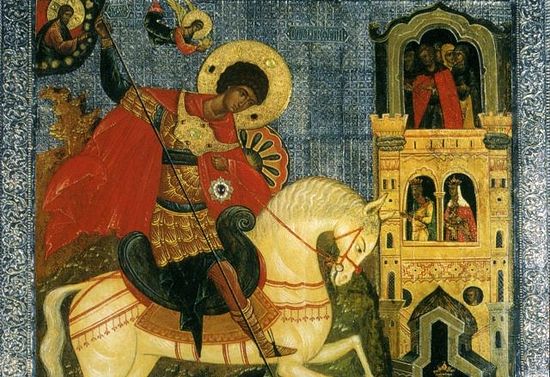
This is what the icon tells us, which is called the “Miracle of St. George about the Serpent”. The image of St. George on the icon, the author of which tried to colorfully describe the famous feat, lives for a long time. Here the saint is depicted on a horse. With a spear he hits a snake - a symbol of evil. It would seem that the spear is a very heavy weapon, but it is worth paying attention to the ease with which the saint holds it. The question is, why is this happening? What a mystery lies in the inhuman power of Gregory. Everything becomes clear if you pay attention to the upper corner of the icon. It is there that the hand of the Lord is depicted, which, as it were, blesses the hero for his feat. It is God's power that helps George defeat the enemy, defeat evil on earth. Probably, this is the main meaning of the icon - every Christian should live so that the Lord can do his good and wonderful deeds through our souls, our actions.